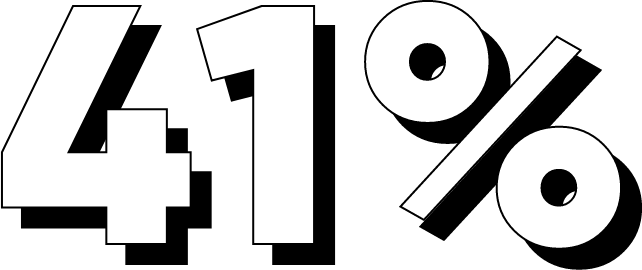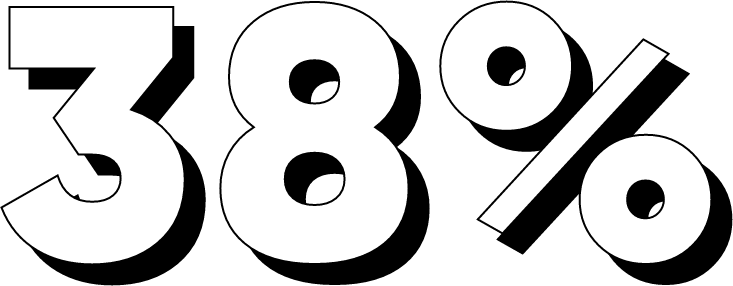DIY traders
turn to
short-selling
After two years of rising markets, the tide looks to be changing and retail traders and investors are taking notice and switching up the way they trade and invest in markets. It’s widely known that retail traders and investors usually buy in anticipation of a price rising — and then sell to close the position to realise a profit or loss. They are very rarely short-sellers: a strategy that enables traders to try and profit from falling asset prices.
But according to the latest Pulse report published by trading and investing platform Capital.com, the retail penchant for long-only strategies may be reversing. The data shows that 38% of retail traders carried out short-position trades in Q2 2022. This was 34% higher compared to the previous quarter and marks the highest number of short sellers trading across the platform since Q1 2020.
The significant rise in short-position traders comes amid a backdrop of declining markets.
According to David Jones, Chief Market Strategist, Capital.com, the rising number of short-position traders in Q2 points to a shifting investor mindset as markets turn more bearish.

As a general rule, self-directed traders and investors seldom short-sell. They are so used to buying first and selling later that it’s psychologically very difficult for them to come out of this way of thinking. Our findings show there has been a sharp rise in clients short-selling in Q2, which shows just how significant the drop in many markets has been. This may have forced many retail traders to change their mindset.
David Jones, Chief Market Strategist at Capital.com
In addition to the rising number of short trades, the Pulse report also found short-selling to be slightly more profitable (32.1%) than long-position trades (28.7%) in Q2 2022.
“The ability to sell-short could well have an impact on traders’ overall profit and loss. This could be particularly true if we enter a period of prolonged weakness in markets, where investors stop being rewarded for just blindly buying the dip. Using sensible risk control measures such as stop losses in tandem with short-selling could be a prudent addition to a trader ‘s overall strategy,” said Jones.
According to data, the two most shorted markets on the platform in Q2 were commodities and indices. Shorting the Nasdaq (US100) proved more profitable in Q2, recording a higher percentage of profits (33.7%) than long positions (32.6%).
“Buying the dips was a very profitable strategy through much of 2021 - but it has of course been a different story this year with the NASDAQ 100 under pressure for much of the year so far. The index had a strong bounceback towards the end of March - but once again this rally hit the buffers, and the index lost 22% in the second quarter. Perhaps those traders who had been trying to buy the dip in the first quarter - and getting their fingers burnt - decided to throw in the towel and join the short sellers in the second quarter. The NASDAQ 100 did show the tentative signs of trying to form a base during June which should make for an interesting third quarter as the battle between the bulls and bears continues,” said Jones.
In Q2

of all oil CFDs traded on the Capital.com platform globally were short, up from 35% in Q1.
Across commodity markets, oil was the most shorted during the period. In Q2, 41% of all oil CFDs traded on the Capital.com platform globally were short, up from 35% in Q1.
“It is perhaps not too surprising that more traders have been taking the view that the market may have become overheated. Oil has rocketed more than 500% from its lows in April 2020 and the global commodity index (S&P GSC) has more than doubled its value. At its peak this year, following the Russian invasion of Ukraine, oil was up 70% for the year to date - and this was before we were even three months into the year.”



Short-selling can be a useful strategy as markets turn bearish
Short-selling can be a useful tool when trading in volatile markets, not least because it enables investors to speculate on falling asset prices, rather than limiting themselves to those ones which go up.

“The ability to sell-short could well have an impact on traders’ overall profit and loss. This could be particularly true if we enter a period of prolonged weakness in markets, where investors stop being rewarded for just blindly buying the dip. Using sensible risk control measures such as stop losses in tandem with short-selling could be a prudent addition to a trader ‘s overall strategy,” said Jones.
“If you are trying to trade markets without at least considering opportunities to short-sell, then you are going into battle with one hand tied behind your back. As we enter a potentially very different environment to that of recent years, short-selling could be an important part of an overall trading and investing strategy for investors,” added Jones.
“We have been spoiled by strongly rising markets across all sorts of asset classes since March 2020 – but 2022 has been somewhat different so far.”
David Jones, Chief Market Strategist at Capital.com
Short trading will and should become an important facet of trading psychology and it is a strategy that is simple to undertake on CFD trading platforms.

This article is for general information purposes only. It is not investment advice or a solution to buy or sell securities. Opinions are the authors; not necessarily that of Capital.com or any of its affiliates, subsidiaries, officers or directors. Leveraged trading is high risk and not suitable for all. You could lose all of your deposited funds. Past performance is no guarantee of future results.







